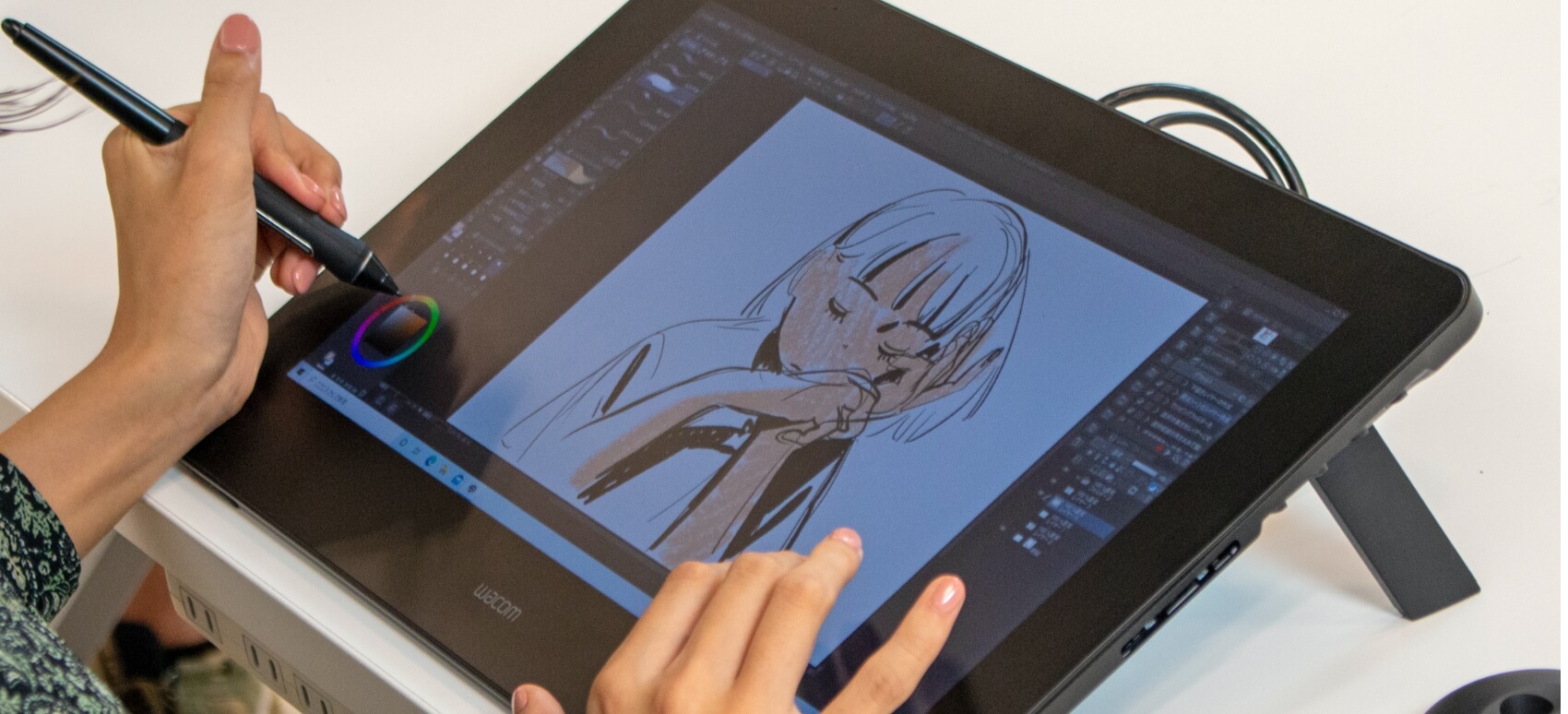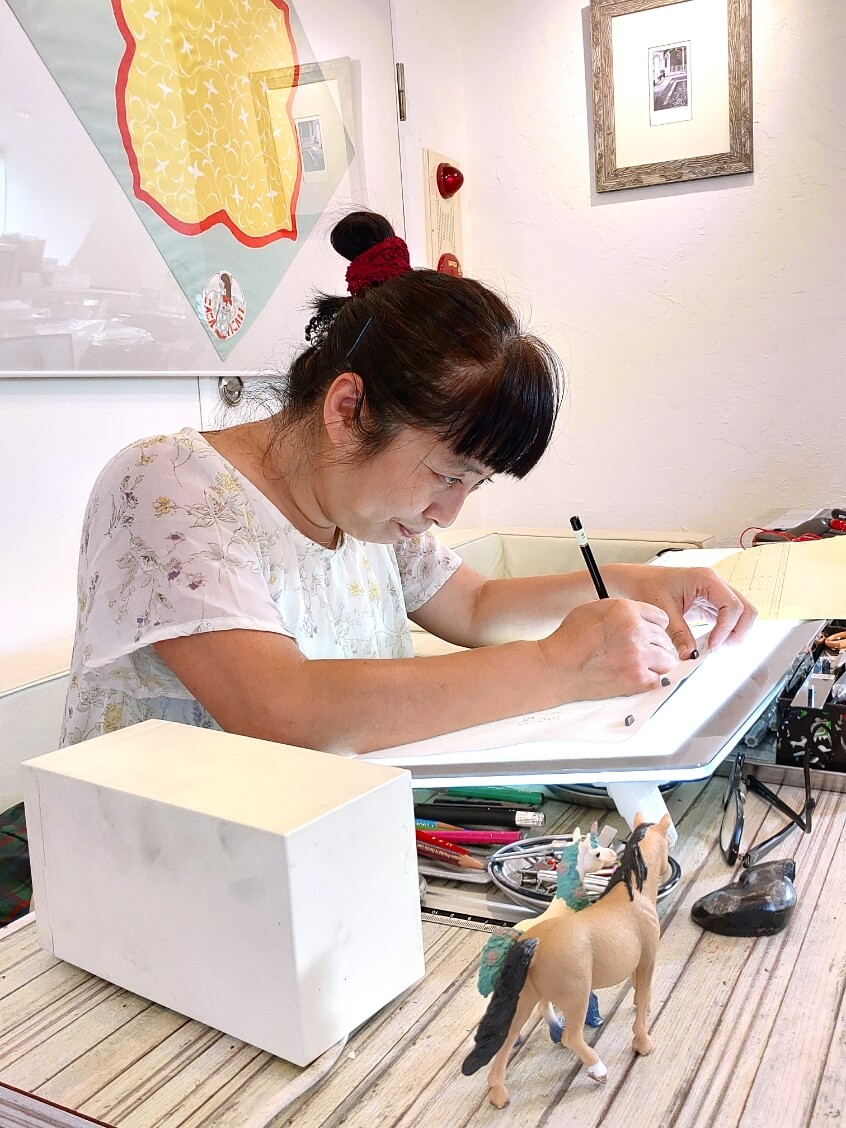Supporting Anime’s Future by Passing Top Skills and Knowhow to to the Next Generation of Animators

Japanese animation, in short “anime” has a proud history of more than 70 years and still shows no sign of slowing down. Through the introduction of video streaming services around the world, the infrastructure of film viewing underwent a great leap forward. On top of that, the COVID-19 pandemic confining people at home increased the desire for on-demand films, a tendency which is still on the rise. Behind closed doors, however, the anime industry is now facing a challenge: how to pass on the great heritage of skills and knowhow to the next generation.
RELATED SESSION:
Initiative for a Million of Animators

Animator: Bestowing Life and Soul to Pictures
The Latin word “anima” means life, soul or spirit. “Animism”, a belief in sprits residing in everything in the universe also derives from the word anima. Without a belief in animism, “The Great Wave Off Kanagawa” by Katsushika Hokusai or “Plants and Animal Scrolls” by Jakuchu Ito, outstanding masterpieces of Japanese art, would have lost their sparkle. “Animation” comes from the English word “animate” which in turn originates in “anima”. Hence, animation means “animated pictures” and an animator “bestows life to pictures” by putting pictures in motion”.
Walt Disney established animation as a popular culture and laid the groundwork for today’s commercial success of the industry. Japan’s anime history dates back to a period in Word War II. “Hakujaden (White Snake Enchantress)” was released in 1958 as the first animated feature film ever produced in Japan. Subsequently the drawing staff of this epic film became leaders of the anime industry in Japan. An unbroken line of legendary animators can be traced back to these pioneers.
Today, “anime” is generally considered a synonym of animated films produced in Japan. The worldwide craze for anime, on the other hand, led to an alarming shortage of Japanese animators both in terms of quality and quantity. Great animators have supported the history of Japanese anime with their hand-drawing skills. In failing to preserve this rich heritage of skills and expertise, the quality of future anime is destined to suffer. Without effective countermeasures, the anime industry will soon be flooded with second-rate work and risk its reputation for quality in the world.

Keeping the Heritage of “Hand-Drawn Anime”
The sense of a crisis for hand-drawn anime prompted Ms. Hitomi Tateno to take decisive action with a clear sense of mission. Tateno is an experienced animator with a long career of working as an editorial supervisor at STUDIO GHIBLI. The action she took was the establishment of the Sasayuri Animation Training Center to institutionalize the training of the necessary skills and knowhow for animation production. Fearing that the technology, knowhow and unwritten codes for making quality animation are about to be lost, her chosen mission is to “hand down this inheritance in its true sense to the next generation and enrich it further”. Training courses at the Center should equip students with the level of knowledge that “would usually be gained in on-the-job training for newcomer animators in studios” or that “would qualify them as an independent subcontractors for animation drawing works”. In other words, the Center aims at supplying industry-ready animators. The traditional way of animator training is somewhat similar to an apprenticeship under a master craftsman. Of course, to a certain extent, apprenticeship also does the job of technology and knowhow transfer but just takes a long time to accomplish. Accordingly, many young talented wannabe artists are forced to leave the industry before reaching the mastery of skills required by the industry.
In response to this current state of affairs in the industry, the Sasayuri Center presents a radical solution addressing the very core of the problem. Namely, the Center streamlines animator training by “compacting different types of training into one joint method” to act as a springboard – something that only Ms. Tateno with her long experience in supervising numerous animators is best placed to do. With the thorough knowledge of skills of a professional animator, she compiled a unique training curriculum.
“In 2019, I worked as a supervisor-cum-producer for Natsuzora”, a TV drama series produced by NHK involving a historical animation figure. This experience gave me food for thought about the industry and I felt the need to set up a proper training system for the anime industry. As often pointed out, the current working conditions of animators are rather grim. Given this level of distress, many aspiring artists give up and quit their jobs. Still, the industry offers an adequate career for those furnished with solid skills and expertise. There are three players in the game, namely tutors, learners and employers. However small my contribution may be, I want to help improving the industry by offering a model that satisfies all three parties” says Ms. Tateno. Her words reveal a sense of solidarity for the anime industry where she has been working for so long.
Wacom's contribution is to provide the necessary instruments such as digital pens or pen tablets to the Sasayuri Animation Training Center. Wacom’s help is much in line with the needs of the time. The production of anime is now going through an irreversible process of digitization. Digitized production frees animators from restrictions in terms of time and place to work. When equipped with digital instruments, animators can work at the front line of anime production anywhere in Japan or the world provided that their skills and knowhow meet the requirements of the industry. As an instrument provider to the industry, Wacom intends to play this role by supporting creators through its collaboration with the Sasayuri Animation Training Center.
Command of View by Standing on the Shoulders of Giants
There are legendary animators called “nine old men” who played a pivotal role in the production of Disney’s early works. “The 12 Basic Principles of Animation” laid down by them were a sort of golden rules on how to give life to characters. After more than a century since its birth, animation is still in the middle of an evolution by adopting new technologies like CG. If we are right about the assumption that moving contents “reflect images in our mind”, hand-drawn animated pictures with their emotive expressions never cease to fascinate. The heritage in the tradition of hand-drawn animation is not limited to drawing techniques but includes a keen sense for “expressions which touch people's hearts”. This knowledge on how to strike a chord is the secret of the trade. When reading out a new ambitious goal, achievements made by an older generation of animators should be respected. Fresh talents to lead the future of the anime industry may be on the horizon after the wisdom of earlier generations is handed down to the next one by the Sasayuri Animation Training Center.
editor / writer_ Chikara Kawakami

